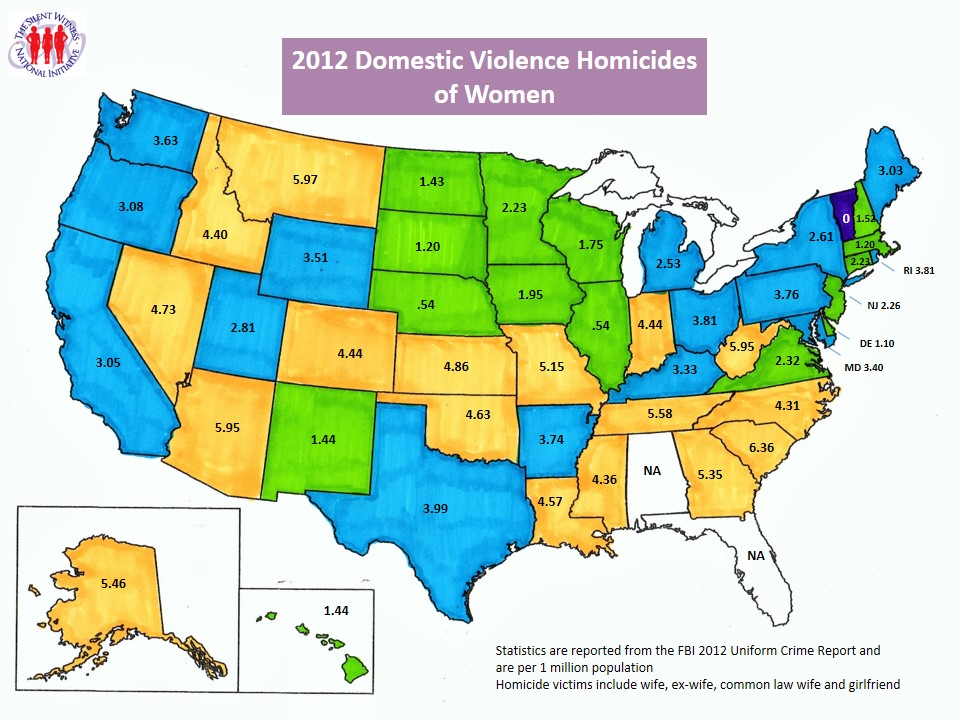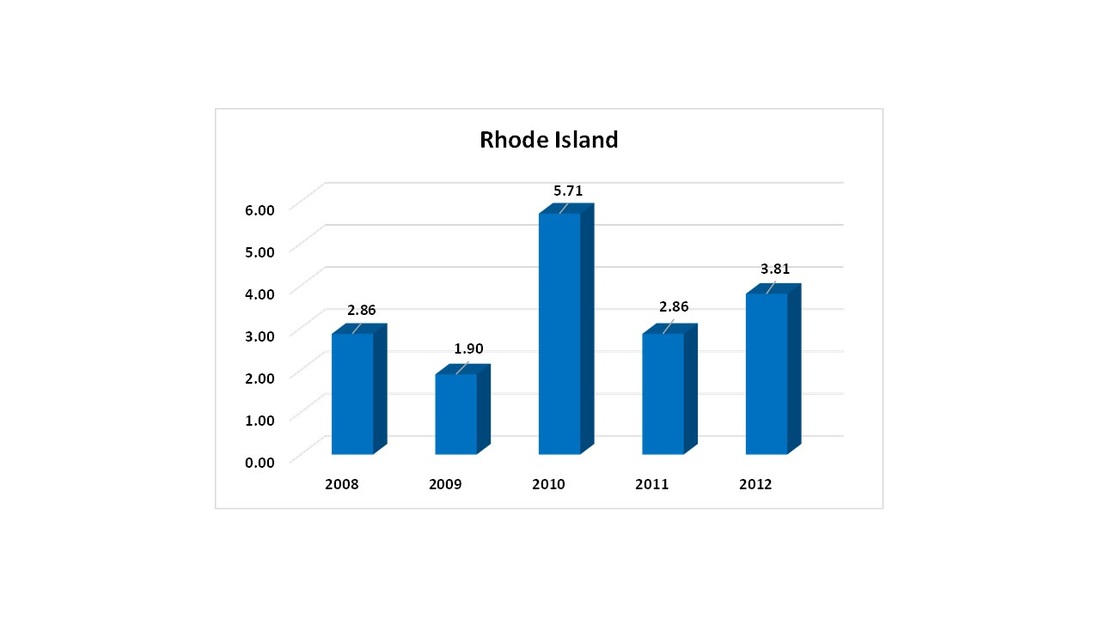The Silent Witness project

The Silent Witnesses of Rhode Island was formed in 1997 in response to a call for each state in the US to create a Silent Witness project, honoring and remembering the victims of domestic violence murders in each state, in time to gather in Washington, DC for the first national March to End the Silence on October 18, 1997. Every state in the US already had a project, except RI.
Eight Rhode Island women met once a month, beginning in August 1997, and by October had created the first Silent Witness exhibit, with figures for each of the five women murdered in Rhode Island in 1992. A sixth figure was created to represent the Unknown Woman, for all those victims who were unidentified. On October 18th, 23 RI women gathered in Washington, DC with the more than 2500 other concerned citizens, carrying the more than 1500 Silent Witness figures from every state in the US and four countries, to honor and remember domestic violence homicide victims around the world.
Since then, Silent Witnesses of Rhode Island has gone on to create nine separate projects around the state. There are now a total of 109 Silent Witness figures, representing almost all of the documented domestic violence homicide victims in Rhode Island from 1980 through 2015. The Silent Witness silhouettes have been created by volunteers throughout the state of Rhode Island and the project has now become part of the RI Crisis Assistance Center. There are exhibits housed at Providence College, Roger Williams University, Johnson & Wales University, Salve Regina University, University of Rhode Island, Rhode Island College, the Domestic Violence Resource Center of South County, Ponaganset High School and at RICAC.
In addition, SWRI is active in educating service providers and the public on the sometimes fatal consequences of domestic violence. We have stepped forward out of the darkness, and with respect and reverence for our Silent Witnesses, we share their stories - because now we must be their voices.
SWRI Believes... :
Eight Rhode Island women met once a month, beginning in August 1997, and by October had created the first Silent Witness exhibit, with figures for each of the five women murdered in Rhode Island in 1992. A sixth figure was created to represent the Unknown Woman, for all those victims who were unidentified. On October 18th, 23 RI women gathered in Washington, DC with the more than 2500 other concerned citizens, carrying the more than 1500 Silent Witness figures from every state in the US and four countries, to honor and remember domestic violence homicide victims around the world.
Since then, Silent Witnesses of Rhode Island has gone on to create nine separate projects around the state. There are now a total of 109 Silent Witness figures, representing almost all of the documented domestic violence homicide victims in Rhode Island from 1980 through 2015. The Silent Witness silhouettes have been created by volunteers throughout the state of Rhode Island and the project has now become part of the RI Crisis Assistance Center. There are exhibits housed at Providence College, Roger Williams University, Johnson & Wales University, Salve Regina University, University of Rhode Island, Rhode Island College, the Domestic Violence Resource Center of South County, Ponaganset High School and at RICAC.
In addition, SWRI is active in educating service providers and the public on the sometimes fatal consequences of domestic violence. We have stepped forward out of the darkness, and with respect and reverence for our Silent Witnesses, we share their stories - because now we must be their voices.
SWRI Believes... :
- in a world free from violence and abuse
- in empowerment for women and the equal worth of all persons
- in the strength of numbers working together for a common mission - all are welcome to participate
- that the issues of violence and abuse are the responsibilities of the legal, community, social and political structures
STATISTICS on Domestic Violence
Statistics On Domestic Violence: A National Crises November 2014 - From SW Co Director Jacquie Skog and the SW Board
Recently Silent Witness (SW) has learned of a U.S. Department of Justice report dated November 2012 (NCJ 239203) stating a decline in the rate of intimate partner violence in the United States. In an article written by Esta Soler, founder of Futures Without Violence (FWV) http://www.futureswithoutviolence.org/, Ms. Soler refers to the NCJ report claim of 64% reduction in the number of intimate partner victimizations. This article prompted several inquiries to SW asking for clarification about how these numbers compared to the dv homicide statistics on our website.
In the NCJ report, intimate partner violence is defined as non-fatal incidents such as rape, sexual assault, robbery, aggravated assault, and simple assault committed by an offender who is the victim's current or former spouse, boyfriend, or girlfriend however it doesn't track homicides.
On October 1, 2014 the homicide statistics from every state in the US, along with national trends, were introduced on our website at http://www.silentwitness.net/statistics--resources.html showing a downward trend in DV homicides,. Although the numbers are still much too high the results of the study confirm that progress is being made. In view of these statistics, we at Silent Witness (SW) feel the need to respond to the reported reduction in intimate partner violence statistics and clarify that domestic violence homicide rates in the US published on our website are not comparable.
In a closer look at the NCJ study methodology, we learned that there are major differences in the way the statistics for the FWV and SW were obtained. According to the NCJ report, the method used to collect the data in the report was obtained by The Bureau of Justice Statistics (BIS) National Crime Victimization Survey (NCVS) through the annual data collection conducted by the U.S. Census Bureau. The NCVS is a self-report survey in which interviewed persons are asked about the number of characteristics of non-lethal victimization experienced during the prior six months, it did not track homicides. Therefore this is a randomized study and not actual reports documented by law enforcement or other government and private agencies and not appropriate to compare to the SW research statistics.
The SW dv homicide statistics reported on our website were derived from data collection by the Federal Bureau of Investigation (FBI) http://www.fbi.gov/about-us/cjis/ucr/crime-in-the-u.s/2010/crime-in-the-u.s.-2010/offenses-known-to-law-enforcement/expanded/expandhomicidemain, representing actual reports documented by law enforcement and other government and private agencies in each state.
Our intention in publishing the dv homicide statistics is to share the information with anyone interested in using the numbers to design prevention and treatment models to address the need for healing programs for men and women to put an end to domestic violence murders and in support of the SW goal to end domestic violence murders by 2020.
It is important to note that the NCJ report contains valuable information about the decline in non-lethal violence yet should not be compared to the documented cases of dv homicides. Further study of the NCJ report is in process by our board of directors so that we can respond to your questions or concerns about its content.
Thank you to Esta Soler and Futures Without Violence for the excellent work her organization is doing to prevent violence in relationships. We are grateful that she is keeping us informed by publishing the reported outcomes of the U.S. Department of Justice November 2012 Special Report on Intimate Partner Violence, 1993-2010.
Recently Silent Witness (SW) has learned of a U.S. Department of Justice report dated November 2012 (NCJ 239203) stating a decline in the rate of intimate partner violence in the United States. In an article written by Esta Soler, founder of Futures Without Violence (FWV) http://www.futureswithoutviolence.org/, Ms. Soler refers to the NCJ report claim of 64% reduction in the number of intimate partner victimizations. This article prompted several inquiries to SW asking for clarification about how these numbers compared to the dv homicide statistics on our website.
In the NCJ report, intimate partner violence is defined as non-fatal incidents such as rape, sexual assault, robbery, aggravated assault, and simple assault committed by an offender who is the victim's current or former spouse, boyfriend, or girlfriend however it doesn't track homicides.
On October 1, 2014 the homicide statistics from every state in the US, along with national trends, were introduced on our website at http://www.silentwitness.net/statistics--resources.html showing a downward trend in DV homicides,. Although the numbers are still much too high the results of the study confirm that progress is being made. In view of these statistics, we at Silent Witness (SW) feel the need to respond to the reported reduction in intimate partner violence statistics and clarify that domestic violence homicide rates in the US published on our website are not comparable.
In a closer look at the NCJ study methodology, we learned that there are major differences in the way the statistics for the FWV and SW were obtained. According to the NCJ report, the method used to collect the data in the report was obtained by The Bureau of Justice Statistics (BIS) National Crime Victimization Survey (NCVS) through the annual data collection conducted by the U.S. Census Bureau. The NCVS is a self-report survey in which interviewed persons are asked about the number of characteristics of non-lethal victimization experienced during the prior six months, it did not track homicides. Therefore this is a randomized study and not actual reports documented by law enforcement or other government and private agencies and not appropriate to compare to the SW research statistics.
The SW dv homicide statistics reported on our website were derived from data collection by the Federal Bureau of Investigation (FBI) http://www.fbi.gov/about-us/cjis/ucr/crime-in-the-u.s/2010/crime-in-the-u.s.-2010/offenses-known-to-law-enforcement/expanded/expandhomicidemain, representing actual reports documented by law enforcement and other government and private agencies in each state.
Our intention in publishing the dv homicide statistics is to share the information with anyone interested in using the numbers to design prevention and treatment models to address the need for healing programs for men and women to put an end to domestic violence murders and in support of the SW goal to end domestic violence murders by 2020.
It is important to note that the NCJ report contains valuable information about the decline in non-lethal violence yet should not be compared to the documented cases of dv homicides. Further study of the NCJ report is in process by our board of directors so that we can respond to your questions or concerns about its content.
Thank you to Esta Soler and Futures Without Violence for the excellent work her organization is doing to prevent violence in relationships. We are grateful that she is keeping us informed by publishing the reported outcomes of the U.S. Department of Justice November 2012 Special Report on Intimate Partner Violence, 1993-2010.
New domestic violence homicide statistics released from Silent Witness Initiative
Nationally, almost 1000 women in the United States were murdered by men who once loved them in 2012. Here in Rhode Island, 4 women were murdered in 2012, which brings our state into the middle third of all states statistics. That means, there were 3.81 domestic violence homicides of women in Rhode Island, per million population - more than 25 other states had lower percentages than RI. And while there is a downward trend (from 1581 women in 1993 to 992 women in 2012), the numbers are still alarming.
Please click on the Silent Witnesses of RI page for photos of our most recent event (October 2014).
Please click on the Silent Witnesses of RI page for photos of our most recent event (October 2014).
For more information about the Silent Witness Initiative. please log on to www.silentwitness.net

